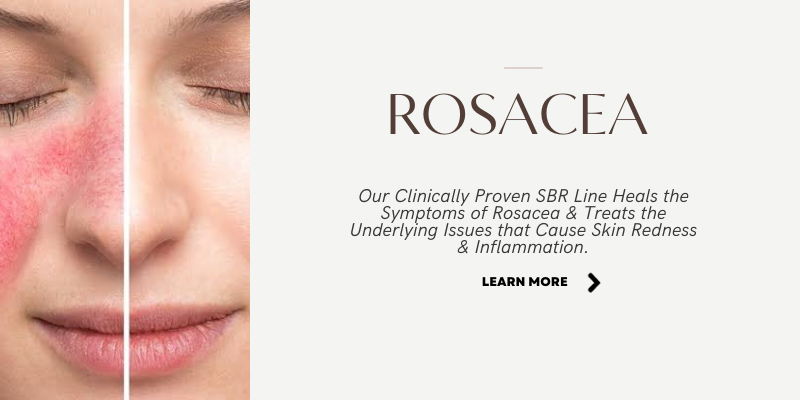Do you suffer with dark (sun) spots, freckles, or other signs of hyperpigmentation? Exposure to UV rays, hormonal imbalances, aging, and stress, along with several other genetic and environmental factors can lead to these dark spots/melasma and uneven skin tone. To combat this, Hydroquinone is one of the most popular topical solutions for treating hyperpigmentation, melasma, post-inflammatory blemish spots and even acne scars.
However, the quick results of Hydroquinone can be offset by undesirable skin damage and this is why you should replace this ingredient, and all products that contain it with natural skin brightening alternatives:
Why Using Hydroquinone Is Highly Risky?
Back in 1982, the US FDA approved Hydroquinone as safe and effective. However, in 2006 it withdrew its ruling stating that there is the potential risk of Hydroquinone being carcinogenic in humans. Its short-term effects include skin reactions such as redness, irritation, peeling and allergy.
A long term side-effect is the gradual thinning of the collagen layer, as well as the risk of developing a condition called ochronosis, which is a reaction to hydroquinone that instead causes darkening. These blackish deposits can be formed into the deeper layers, and can be difficult to reverse.
Going Natural – Brighten Skin Without Side Effects
Dark spots and uneven pigmentation are formed in three steps: stimulation of melanocyte cells with increase in tyrosinase enzyme activity, excess production of the skin pigment – ‘melanin’ and deposition of melanin to form dark spots.
Therefore, hindering the development of the enzyme tyrosinase (the very first step) with natural plant actives and topical application of anti-oxidant rich botanicals work best against hyperpigmentation.
Here are the six best natural alternatives to hydroquinone that can brighten, rejuvenate and restore an even toned complexion:
1. Licorice Root
With ‘liquiritin’ and ‘glabridin’ as the key natural melanin inhibiting actives, extract of Licorice root has been used from ancient times for protecting and brightening the skin. It’s a gentle and an effective alternative used in many ‘dark spot removers’. Licorice is especially, renowned for preventing pigmentation from UVB rays.
The roots’ rich ‘Glycyrrhizin’ (a powerful antioxidant) and Licochalcone reserves additionally protect the skin from free radicals and are helpful in soothing inflammatory skin conditions like dermatitis, eczema, rosacea and psoriasis.
2. Kojic Acid from Mushrooms
Kojic acid is naturally derived from different varieties of mushrooms like Maitake, Tremella, Shiitake, etc. It contains L-ergothioneine and various antioxidants that fades dark spots, sun spots and even stubborn acne spots. Regular application encourages faster cell renewal and increases skin’s elasticity. The gentle acid is also packed with proteins, lipids, phenols and vitamins, which makes it an effective humectant and anti-aging elixir.
3. Vitamin C
Without a doubt, Vitamin C is by far the best researched and most successful skin brightening complex. In fact, lack of Vitamin C is proven to be the number one reason behind dull and wrinkle-prone complexions. Vitamin C is rich in antioxidants and free radical scavenging molecules that lighten dark spots, especially those caused by sun damage and aging.
4. Bearberry Extract
Bearberry or Uva ursi extract contains ‘Arbutin’, which works efficiently at inhibiting melanin production. Bearberry also contains antioxidants, which improves circulation and fades hyperpigmentation.
Editor’s Pro Tip: Our SunProtect SPF 30+ and BioScience Peptide Complex contain the proprietary blend of DevaBright (Kojic Acid, Licorice Root, Bearberry), Vitamin C and various antioxidant-rich botanicals that work synergistically to help even skin tone in less than 4 weeks. Learn more.
5. Lactic Acid
Many peels and medications contain Lactic Acid as the main active ingredient for noticeably smoother and brighter skin. Lactic acid is a powerful AHA and is naturally found in milk, wine and soy products.
6. Papaya
Exfoliation is one of the key practices to remove old cells from the skin’s surface and reveal the brightened complexion underneath. When it comes to choosing effective exfoliating agents, Papaya (with the proteolytic enzyme ‘Papain’) works as an efficient natural fruit exfoliator.
Our Papaya & Honey Exfoliation Mask & Scrub (or the SBR version without the walnut scrubbing particles) with Papaya, Honey, Milk and 20+ other clean, sustainable botanicals naturally brightens the skin, cleanses, and helps remove impurities. Papaya extract is rich in Vitamin A, C and E, which nourish the skin and imparts a dewy glow. Exfoliate your face 2-3X times a week for unclogged pores & a clean, even skin tone.
Read Next: Exfoliating Acids vs. Enzymes: What’s the Best for Your Skin?


